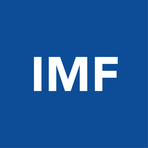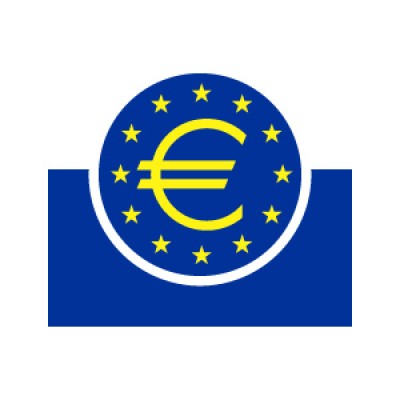Eurozone's Economic Tightrope: Balancing Tariffs and Growth
April 29, 2025, 4:42 pm

Location: United States, District of Columbia, Washington
Employees: 1001-5000
Founded date: 1944
Total raised: $33.23M
The eurozone is walking a tightrope. On one side, there’s the weight of U.S. tariffs. On the other, a flicker of hope from Germany’s infrastructure spending. The International Monetary Fund (IMF) recently adjusted its growth forecasts for the euro area, trimming expectations for 2025 and 2026. The cuts reflect a broader malaise affecting not just Europe, but also the U.S., U.K., and parts of Asia. The culprit? President Donald Trump’s unpredictable tariff policies.
The IMF’s latest report highlights a grim reality. It predicts euro area growth will slow to 0.8% in 2025 and 1.2% in 2026. These figures are down by 0.2 percentage points from previous estimates. The IMF’s European department head, Alfred Kammer, emphasizes that tariffs are the primary drag on growth. Fiscal measures, like Germany’s recent spending bill, can only do so much to counteract this trend.
Germany’s infrastructure plan is a silver lining. It promises to inject around 500 billion euros into the economy. This spending is aimed at modernizing infrastructure and addressing climate change. Economists view this as a potential game changer for Europe’s largest economy. However, the optimism is tempered by the looming shadow of U.S. tariffs. These tariffs are expected to stifle global trade and economic growth.
The European Central Bank (ECB) is also feeling the pressure. Policymakers are contemplating another interest rate cut, but the appetite for drastic measures is lacking. The ECB has already reduced rates seven times since June 2024, bringing the key rate down to 2.25%. The consensus among ECB governors is to proceed cautiously. They are eyeing a potential quarter-point cut in June, but they remain wary of making significant moves that could unsettle markets.
Recent data from the eurozone paints a concerning picture. Wage growth is slowing, and business activity is stalling. The tariffs imposed by the U.S. have created disinflationary pressures, easing some inflation concerns. However, the long-term outlook remains murky. The interplay of cheaper imports from China and Germany’s fiscal spending creates a complex economic landscape.
The uncertainty surrounding U.S. trade policies is palpable. Trump’s tariffs have shaken investor confidence, not just in the U.S. but globally. Fuel prices and the dollar have taken a hit, while the euro has gained strength. This shift adds another layer of complexity to the eurozone’s economic strategy.
The ECB is tasked with navigating these turbulent waters. While inflation appears to be on a downward trajectory, the broader economic outlook is clouded. The ECB must balance the need for stimulus against the risks of inflation becoming entrenched. Kammer suggests that the ECB should hold its course unless major shocks occur. This cautious approach reflects the delicate balance policymakers must maintain.
The IMF’s recommendations echo this sentiment. Kammer advocates for one more rate cut this summer, followed by a period of stability. The goal is to sustain the 2% inflation target, which seems achievable in the latter half of 2025. However, the path to this goal is fraught with challenges.
The eurozone’s economic landscape is like a chess game. Each move is calculated, but the opponent—U.S. tariffs—remains unpredictable. The stakes are high. A misstep could lead to a cascade of negative effects, not just for Europe but for the global economy.
As the ECB prepares for its June meeting, the focus will be on the evolving economic data. Policymakers will need to weigh the potential benefits of a rate cut against the risks of further destabilizing the economy. The consensus is leaning towards caution, but the situation is fluid.
In conclusion, the eurozone stands at a crossroads. Germany’s infrastructure spending offers a glimmer of hope, but the overshadowing threat of U.S. tariffs complicates the picture. The IMF’s growth forecasts reflect a cautious optimism, tempered by the realities of global trade tensions. The ECB’s strategy will be crucial in navigating this landscape. As the eurozone balances growth and stability, the world watches closely. The outcome will shape not just Europe’s future, but the global economic landscape as well.
The IMF’s latest report highlights a grim reality. It predicts euro area growth will slow to 0.8% in 2025 and 1.2% in 2026. These figures are down by 0.2 percentage points from previous estimates. The IMF’s European department head, Alfred Kammer, emphasizes that tariffs are the primary drag on growth. Fiscal measures, like Germany’s recent spending bill, can only do so much to counteract this trend.
Germany’s infrastructure plan is a silver lining. It promises to inject around 500 billion euros into the economy. This spending is aimed at modernizing infrastructure and addressing climate change. Economists view this as a potential game changer for Europe’s largest economy. However, the optimism is tempered by the looming shadow of U.S. tariffs. These tariffs are expected to stifle global trade and economic growth.
The European Central Bank (ECB) is also feeling the pressure. Policymakers are contemplating another interest rate cut, but the appetite for drastic measures is lacking. The ECB has already reduced rates seven times since June 2024, bringing the key rate down to 2.25%. The consensus among ECB governors is to proceed cautiously. They are eyeing a potential quarter-point cut in June, but they remain wary of making significant moves that could unsettle markets.
Recent data from the eurozone paints a concerning picture. Wage growth is slowing, and business activity is stalling. The tariffs imposed by the U.S. have created disinflationary pressures, easing some inflation concerns. However, the long-term outlook remains murky. The interplay of cheaper imports from China and Germany’s fiscal spending creates a complex economic landscape.
The uncertainty surrounding U.S. trade policies is palpable. Trump’s tariffs have shaken investor confidence, not just in the U.S. but globally. Fuel prices and the dollar have taken a hit, while the euro has gained strength. This shift adds another layer of complexity to the eurozone’s economic strategy.
The ECB is tasked with navigating these turbulent waters. While inflation appears to be on a downward trajectory, the broader economic outlook is clouded. The ECB must balance the need for stimulus against the risks of inflation becoming entrenched. Kammer suggests that the ECB should hold its course unless major shocks occur. This cautious approach reflects the delicate balance policymakers must maintain.
The IMF’s recommendations echo this sentiment. Kammer advocates for one more rate cut this summer, followed by a period of stability. The goal is to sustain the 2% inflation target, which seems achievable in the latter half of 2025. However, the path to this goal is fraught with challenges.
The eurozone’s economic landscape is like a chess game. Each move is calculated, but the opponent—U.S. tariffs—remains unpredictable. The stakes are high. A misstep could lead to a cascade of negative effects, not just for Europe but for the global economy.
As the ECB prepares for its June meeting, the focus will be on the evolving economic data. Policymakers will need to weigh the potential benefits of a rate cut against the risks of further destabilizing the economy. The consensus is leaning towards caution, but the situation is fluid.
In conclusion, the eurozone stands at a crossroads. Germany’s infrastructure spending offers a glimmer of hope, but the overshadowing threat of U.S. tariffs complicates the picture. The IMF’s growth forecasts reflect a cautious optimism, tempered by the realities of global trade tensions. The ECB’s strategy will be crucial in navigating this landscape. As the eurozone balances growth and stability, the world watches closely. The outcome will shape not just Europe’s future, but the global economic landscape as well.
